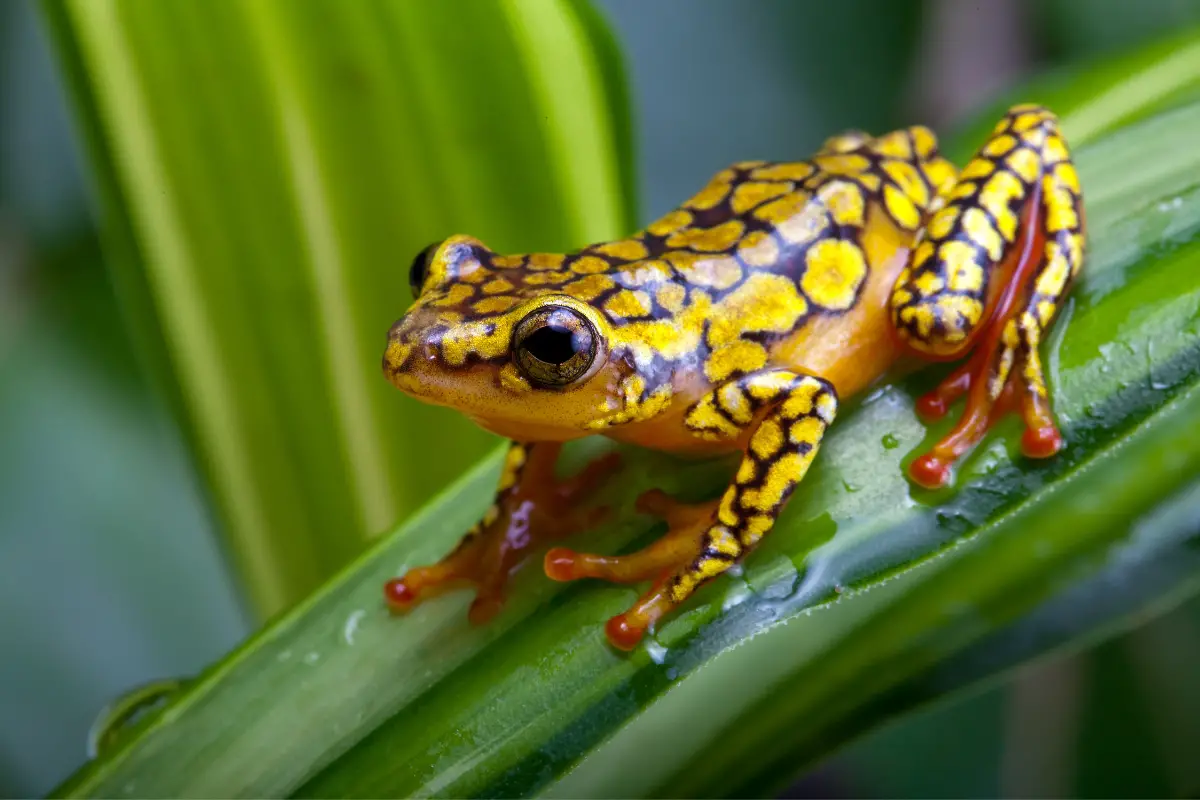Largest Amphibians on Earth
Amphibians come in all shapes and sizes, from the tiny 0.5-inch-long Paedophryne amanuensis frog to the colossal 6-foot-long Chinese giant salamander.
In this article, we explore the 10 largest amphibians found around the world, measuring them by body length from head to toe.
We’ll uncover what makes these giants of the amphibian world so big compared to their relatives and learn a bit more about their behavior, habitats, conservation status and more.
Defining the Largest Amphibians
Amphibians are cold-blooded vertebrates that begin their lives in water, breathing through gills, before undergoing metamorphosis to live on land, breathing with lungs as adults. There are three main groups: frogs and toads, salamanders and newts, and caecilians.
When determining size, the measurement used is the total length of the amphibian from snout to vent. This allows for an equal comparison across the diverse body shapes and lengths of tails found in different groups. Mass is not used as it can fluctuate significantly during the amphibian’s lifetime.
The largest amphibians primarily belong to two ancient groups – the giant salamanders and the bullfrogs. Modern amphibians have an average body length between 5 to 9 cm (2 to 3.5in), with few growing larger than 20 cm (7.9in).
Giants far exceed this size, giving them advantages for survival, but also making them targets for threats from humans.
Largest Amphibian Species in the World
10. American Bullfrog – 20 cm (7.9 in)
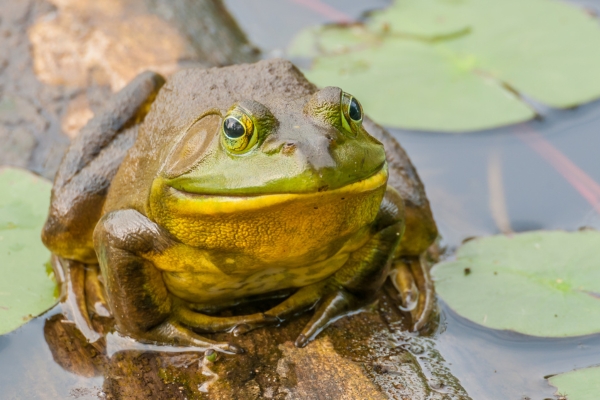
Kicking off our countdown is the American bullfrog native to eastern North America. They can reach sizes up to 20 cm (7.9 in), with females larger than males on average.
Bullfrogs are aquatic ambush predators feeding on any prey they can overpower and fit in their mouths, including insects, fish, rodents and even small birds and snakes! Their enormous appetites and rapid reproduction enable them to outcompete other frog species, contributing to declines in biodiversity.
Invasive bullfrog populations have been introduced worldwide, often displacing local species. Conservation efforts now seek to control bullfrog spread and promote coexistence where eradication is not possible.
9. Sharp-ribbed Newt – 25 cm (9.8 in)
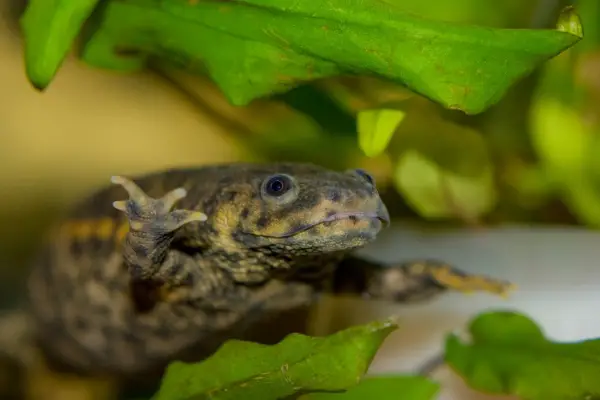
Found in northwest China, the sharp-ribbed newt grows up to 25 cm (9.8 in) long. They are also called giant fire-bellied newts thanks to their bright orange undersides.
Sharp-ribbed newts inhabit montane wetlands and slowly flowing streams surrounded by broadleaf forest. Unusually for a newt, adults are completely aquatic, eating small fish, frogs, crustaceans and aquatic insects. Their populations are under pressure from habitat loss and pollution.
8. Titicaca Frog – 27 cm (10.6 in)
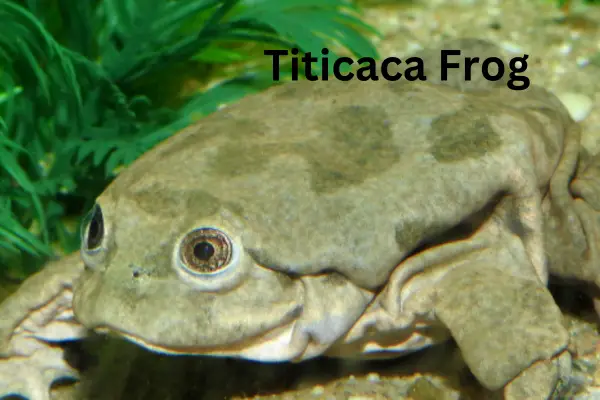
Reaching 27 cm (10.6 in), the Titicaca frog is both the largest fully aquatic frog and the largest frog living at high altitude. They are endemic to Lake Titicaca which sits over 12,500 feet high in the South American Andes spanning the Peru and Bolivia border.
Titicaca frogs float upside-down in chilly waters up to 15 meters deep, waiting to ambush anything small enough to gulp down. Their loose skin folds allow them to take in more oxygen to survive at altitude. Habitat degradation from water pollution and tourism developments pose conservation concerns.
7. Goliath Frog – 32 cm (12.6 in)
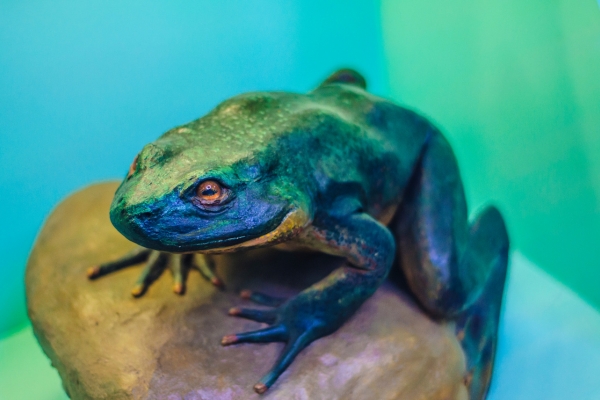
As their name suggests, Goliath frogs are titans among amphibians, able to reach 32 cm (12.6 in) nose-to-tail and weigh up to 3.3 kg (7.3 lb). They live in rapids and swifter sections of rivers in the rainforests of coastal West Africa.
Goliath frogs sit in ambush, grabbing fish and crustaceans floating past their huge mouths rimmed with small teeth. Their tadpoles are also giants, growing to 15 cm (6 in). Habitat loss and overharvesting for food has reduced populations of these record-breaking frogs.
6. Axolotl – 35 cm (13.8 in)
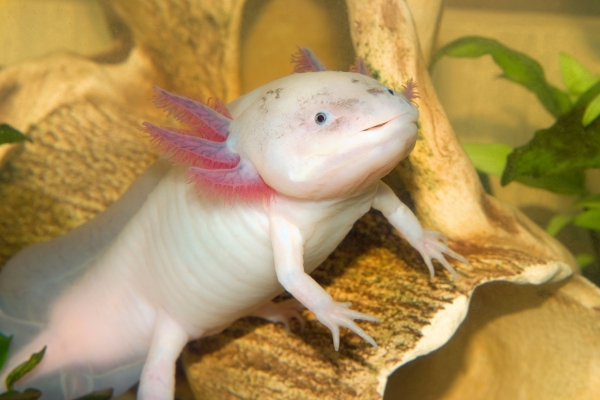
The iconic axolotl from Mexico City earned its place as a top ten giant, growing over 35 cm (13.8 in) in length. Axolotls exhibit ‘neoteny’, meaning they retain key larval features like feathery external gills into adulthood.
Wild populations inhabit Lake Xochimilco where they once thrived in huge numbers. Water abstraction and urban sprawl led to habitat deterioration, with axolotls now critically endangered in the wild. Luckily captive populations are abundant in labs and homes thanks to their popularity as pets.
5. Common Mudpuppy – 40 cm (15.7 in)
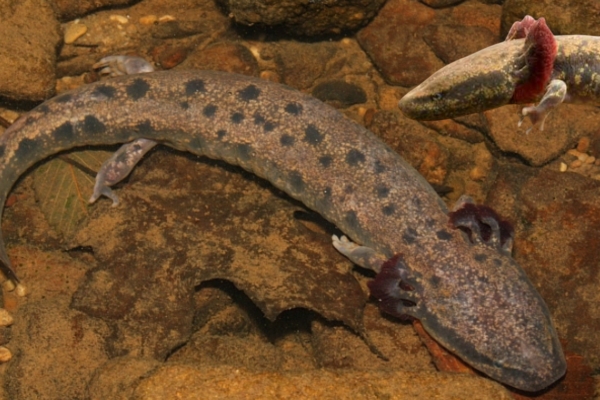
The common mudpuppy is the largest salamander native to the US and Canada, reaching 40 cm (15.7 in). Unlike most salamanders which live on land, the mudpuppy spends its fully aquatic life in lakes, ponds and slow-moving rivers.
Mudpuppies have bushy red external gills which wave gently to absorb oxygen from the water. Small fish and invertebrates make up their diet. While mudpuppy populations currently seem stable, water pollution is an increasing threat.
4. Hellbender – 74 cm (29.1 in)

With a name like ‘hellbender’, this giant salamander was always going to impress! The Eastern hellbender subspecies grows up to 74 cm (29.1 in) long, with a range spanning across North America’s eastern mountain ranges.
These nocturnal predators use their wrinkly skin to blend into large flat rocks on riverbeds. Prey like crayfish are sucked into their powerful jaws when straying too close. Habitat degradation is causing hellbender numbers to decline, but conservation efforts aim to revive populations.
3. Japanese giant salamander – 80 cm (31.5 in)

The Japanese giant salamander holds the record for being the second largest amphibian in the world by length, reaching just over 80 cm (31.5 in). And they don’t stop growing throughout their lifespans exceeding 50 years.
Living hidden amongst mountain stream boulders across central and western Japan, these giants ambush small fish and crustaceans with explosive suction feeding. Their huge size is attributed to a lack of predators and competition combined with cold highly oxygenated river water.
Japanese giant salamanders have cultural significance across Japan and are legally protected, but are still threatened by habitat loss from dams and infrastructure development.
2. Chinese giant salamander – 180 cm (5.9 ft)
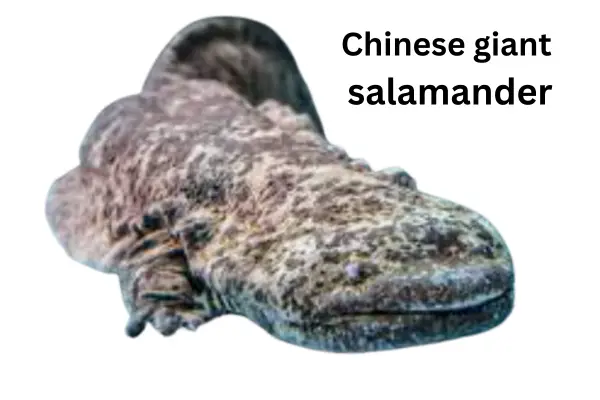
Eclipsing all other giant amphibians, the Chinese giant salamander is the longest in the world growing over 180 cm (5.9 ft) long. Their enormous size evolved in large cold rivers and lakes in central China where abundant mountain runoff fertilizes the water encouraging plenty of prey.
These gentle giants have terrible eyesight so rely on sensory nodes across their skin to detect movement of fish and crustaceans to ambush. Living up to 55 years, they just keep growing as they age.
Once abundant, Chinese giant salamander numbers have crashed by over 80% since the 1950s due to habitat destruction and overhunting. They are now critically endangered and one of the world’s most threatened species.
1. African slender-snouted crocodile – 240 cm (7.9 ft)
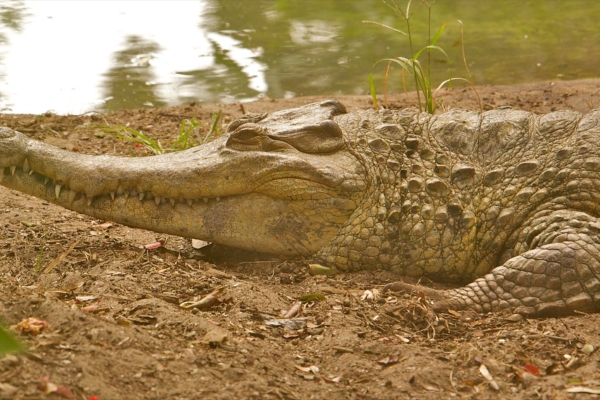
While not a true amphibian, the African slender-snouted crocodile has a largely aquatic lifestyle, earning it an honorary mention as the biggest. Adults average 240 cm (7.9 ft) long, with the largest number of males reaching over 400 cm (13 ft)!
Rather than armoured scales, their skin has small ossifications embedded like tiny diamonds, giving rise to their alternate name of African dwarf crocodile.
Found across freshwater wetlands and rivers of the Congo Basin, they prey on fish, amphibians and small mammals.
Widespread hunting for the bushmeat trade poses serious risks to the conservation of this already elusive giant. Further research is urgently needed to inform protective policies before populations decline beyond recovery.
Discover More of the Largest Amphibians on Earth
That completes our tour through ten of the most impressively large amphibians found across the world, shining a spotlight on these record-breaking cold-blooded giants.
We discovered how evolution has selected for enormous sizes in certain groups and environments. Hopefully bringing attention to some of the serious threats these giants face can help conserve their habitats and safeguard future generations.

